The content of the article
- 1 Ways to build nails
- 2 Features nail extensions acrylic
- 3 Features of gel nail extension
- 4 Necessary tools and materials
- 5 Preparation of nails for building
- 6 Gel nail extension on forms
- 7 Gel nail extension on tips
- 8 Acrylic nail extension on forms
- 9 Acrylic Nail Tips
- 10 Important Tips
- 11 Video: acrylic nail extension video tutorial
Beauty salons offer a wide range of services, including gel and acrylic nail extensions. Every self-respecting girl should follow her hands, regardless of whether she works or does household chores. If a lady builds up her nails in the salon, she is forced to visit a specialist every 3 weeks, because the nail plate grows quickly and there is a need for correction. It is important to learn how to carry out the procedure yourself, in order to avoid unnecessary waste and loss of time.
Ways to build nails
Masters use tips and shapes to work with materials.
Tips extension
They are made of plastic, they are an elongated plate that is attached to the glue to the edge of the native nail. Next, gel or acrylic is applied, the surface is polished and you can begin to create a picture. Tips are convenient in that they use only the edge of the nail, as a result of which the effect on the natural plate is minimized. The material is available in various lengths and shapes, which allows you to quickly choose the right option. After attaching the plate to the nail, they set the desired size, and cut off the excess with a special tip cutter.
Form extension
The material for work is made of a dense paper base, which is covered with polyethylene on top. The outer part is equipped with a sticky layer that holds the shape on a natural nail and does not let it fall off until the master finishes the work. The outside also prevents the material from sticking or absorbing into its surface. As a rule, disposable forms, there are reusable ones with special clamps, but they are not used at all.
When choosing the preferred method of building, start from the length of your own nails. If they are trimmed under the root and there is no free edge of 1-2 mm, there is nothing to fix the form on. Tips, in turn, are not very durable, but the process will go 1.5 times faster.
Features nail extensions acrylic
Initially, acryl was used exclusively by dentists for implantation and tooth repair; currently, masters have resorted to this method in cosmetology as well. Acrylic is a combination of liquid crystals (liquids) and loose powder. The liquid interacts with oxygen, as a result of which the material hardens and a strong layer forms.
Acrylic is cloudy, so the aquarium design immediately disappears, for these purposes it is better to choose a gel. However, if you prefer gel, you can forget about perfect lines and a clear outline, since this plus belongs to acrylic. If you use this method in an apartment or in a closed unventilated space, you will lose your mind about the smell of material.
It's all about the monometer, which is used in building on this technology. Its toxic and volatile smell spreads around the room in an instant. If you settled on the acrylic method, set aside a separate room for yourself, carefully ventilate it, close the door and do not allow your child and pets to enter there.
Features of gel nail extension
This direction appeared not so long ago, but has already taken pride of place in the hearts of its owners. As a rule, a gel consists solely of natural polymers, as a result of which it is harmless to nails.Most often it consists of coniferous resin, therefore, the artificial coating is non-toxic and resistant to various factors.
The gel is particularly strong and durable, the process does not stand still and manufacturers began to produce a composition of a denser consistency. The material will not spread on the native nail, which allows the beginner to carefully and accurately carry out the procedure. The gel does not have a sharp and repulsive odor, it does not harden in a few minutes, like acrylic, which is an indisputable advantage of this technology.
Necessary tools and materials
- 36 watt UV lamp.
- Cuticle shovel. Choose an instrument made of orange wood, this material is more gentle on the skin, it is soft and environmentally friendly.
- Disinfectant. For hands, a regular antiseptic is suitable, tools can be boiled, and then treated with alcohol. If these options are not suitable, buy Kutasept for hands and Bacillol for tools.
- Files. Abrasiveness of tools for acrylic nails - 80/100, for gel - 100/120. The higher the indicator, the softer the nail file. You will also need a glass file for natural nails.
- Dehydrator is a special liquid composition designed for degreasing natural nails.
- Brushes. All of them must be natural, artificial leave a pile on the gel or on acrylic, then it can not be removed. You will need a round brush for applying acrylic and a flat brush for gel.
- Forms or tips. Adhesive must be attached to the materials, do not use it, it is bad. Buy glue separately for each way of building.
- Monometer is a special fluid that is only required for acrylic nail extensions.
- Tweezers are needed exclusively for forms to capture and attach them.
- Primer is a tool for processing a natural nail plate, which provides a strong connection with an artificial nail.
- Finish - the product gives shine to the extended nails, it is needed both for acrylic and gel.
- Liquid to remove the sticky layer in the final result.
- Special building gel or acrylic powder, the choice is made in favor of a particular building technology.
- Tips cutter is needed if building is done on tips.
Preparation of nails for building
Important: if you have a fungus or crack on your nails, do not start the procedure.
Sanitize your hands. Take an orange scapula and move the cuticle up, but do not cut. Saw off the top layer of your nail with a glass file, move from the center to the edge. You need to make the surface of the plate matte.
Treat the edge of the nail, do not make it too sharp or vice versa square, bring the shape to a soft oval. Remove the dust that forms, then coat the nail with a primer.
Gel nail extension on forms
- Take the forms and fix them on the nails, connecting the ends together. Feed material under the plate, not on it. Gel your nail along with the mold. Look at the scale, remember what division you stopped at, so that on the next nails you can bring the gel to the same length.
- After applying the first coat, place the nail in the lamp for 45 seconds. For your convenience, first grow four fingers, process them and dry them thoroughly, and after them switch to building on the thumb. When the layer has dried, take a file abrasive 100/120 and begin to file the surface.
- Remove the dust with a napkin and proceed to the second, denser layer. Apply the gel and turn the palm up so that the material spreads evenly on the plate and does not slip onto the cuticle. Dry the layer for 2 minutes.
- Detach the forms from the extended nail. Take the sticky layer remover, apply it on a cotton swab and walk along the surface. Then cut the second layer to a matte state.
- Put the finish and dry it for 1 minute. If you have the talent of an artist, you can paint a nail. If there is no such gift, cover the plate with ordinary varnish in 2 layers, dry each of them for 40 seconds. Treat the cuticle with oil and do not wet your hands for 2.5 hours.
Gel nail extension on tips
- Apply glue to the inside of the nail tips and glue to the edge of the nail. Hold for 5 seconds to dry. Take tip cutter and adjust length. With a glass file, align the border of the nail tips and the natural nail, and also adjust the edge of the artificial plate.
- Put the gel on the brush and cover it with your nail, moving from the cuticle down. Let the gel dry in the lamp, hold your finger there for 2 minutes. Make the next layer, but already on the entire surface of the native and artificial nail, dry for 1.5 minutes.
- Take liquid to remove the sticky layer that has formed after polymerization. Put it on a cotton pad and wipe the nail. File 100/120, smooth the surface, then cover with a finish. Make a drawing or paint with monophonic varnish in 2 layers. Dry in the lamp for 2 minutes.
Gel nails correction
- Take a scapula and move the cuticle. With a 80/100 file, remove 2/3 of the entire gel.
- Saw off your overgrown nail, aligning the place where it comes into contact with the gel coating.
- Sanitize your hands. Apply a primer to the nail and place it in the lamp for 1 minute.
- Make a layer of gel, as when building, dry for 1.5 minutes and apply a second, also dry it.
- Degrease the surface with a dehydrator, cover with a finish and send to the lamp for 2 minutes. Give your nails the desired shape.
Acrylic nail extension on forms
- Glue the mold by connecting the ends. Get the material under your nail.
- Pour the liquid into the container, moisten the brush in it. Squeeze it in a convenient way, start collecting powder to make a ball. Make sure it is dry, otherwise acrylic will spread on your nail. Let the liquid soak in the powder and proceed to the procedure.
- Start gently rolling the ball in shape and with your own fingernail without affecting the cuticle. If the layer is too thin, repeat the maneuver. After all the layers are ready, dry your nails, remove the shape with tweezers and file the edge to the desired length. Polish the surface with a 80/100 file, cover with a finish and dry in a lamp for 2 minutes. Coat with ordinary varnish in 2 layers and dry them for 30 seconds each.
Acrylic Nail Tips
- Take the tips and apply glue to the inside, then immediately attach to the tip of your own nail. Hold for 10 seconds so that the tips grasps with a natural plate.
- Saw off 80/100 with all the bumps on the surface where the tips go into your nail. Also at this stage, give the desired shape and cut the artificial edge with a tip cutter if it is too long. Coat the nail with a primer along the entire length.
- Dip the brush in liquid, squeeze it and lower it into the modeling powder. Apply the composition to the nail with the tipsa, and wait until the acrylic hardens. Walk the file on the surface, making it smooth without tubercles and depressions. Put the finish, and then send the nails to dry in the lamp for 2 minutes. Make a design or cover with 2 layers of varnish, dry for 30 seconds.
Acrylic Nail Correction
- Disinfect your hands, remove the top layer of varnish with a liquid that does not contain acetone.
- Move the cuticle with an orange stick. Completely cut away the free edge of the artificial nail, and the entire surface of the plate by 70%.
- With a glass file, bring your regrown nail to a matte state.
- Dehydrate the nail and coat with primer.
- Begin modeling by applying acrylic with a brush, as when building, trying not to fall on the cuticle.
- Finish and lower your finger into the lamp for 2 minutes.
Important Tips
- Consult with your doctor if you have contraindications for the use of gel, acrylic, dehydrator, primer or other means. It’s important to find out before you start the procedure.
- Nail extensions are contraindicated for women and girls with diabetes, stomach diseases, and those who have recently taken antibiotics.
- Be sure to take a break while wearing artificial turf. Let your nails rest at least once every 2 months.
- Nail extensions can lead to cracks and dystrophy of the natural plate. There is also a high risk of getting an infection, so always disinfect your instruments before starting work.
- Grease the cuticle more often with special oil, make soda baths (1 tablespoon of soda is necessary for 250 ml of water).
Agree, it is not difficult to build nails at home. It is important to control the process and pay attention to possible little things. Choose the appropriate building option, decide on the materials and conquer the heights forward. Good luck!
Video: acrylic nail extension video tutorial


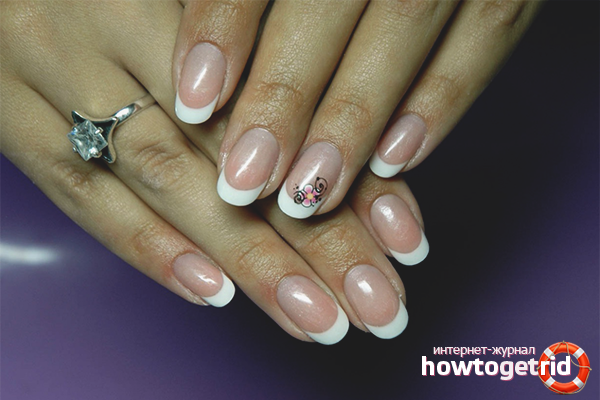
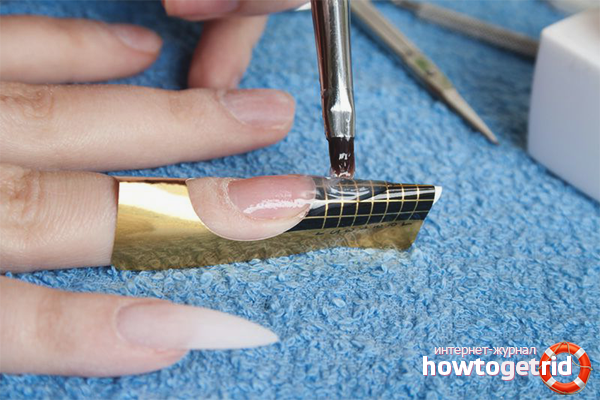

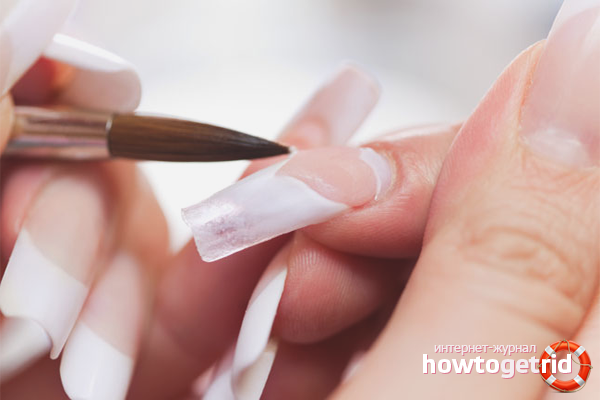


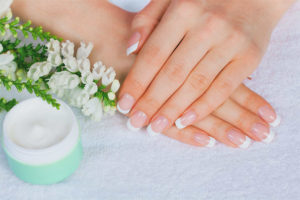
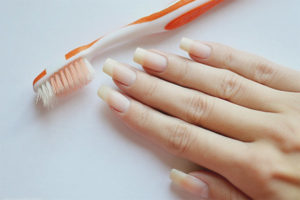
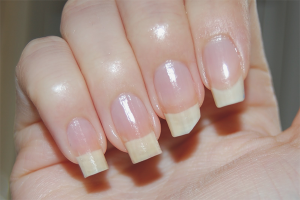
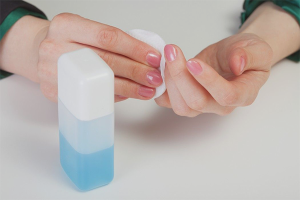
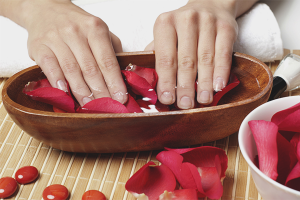
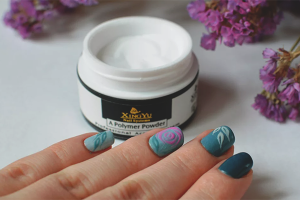
Submit